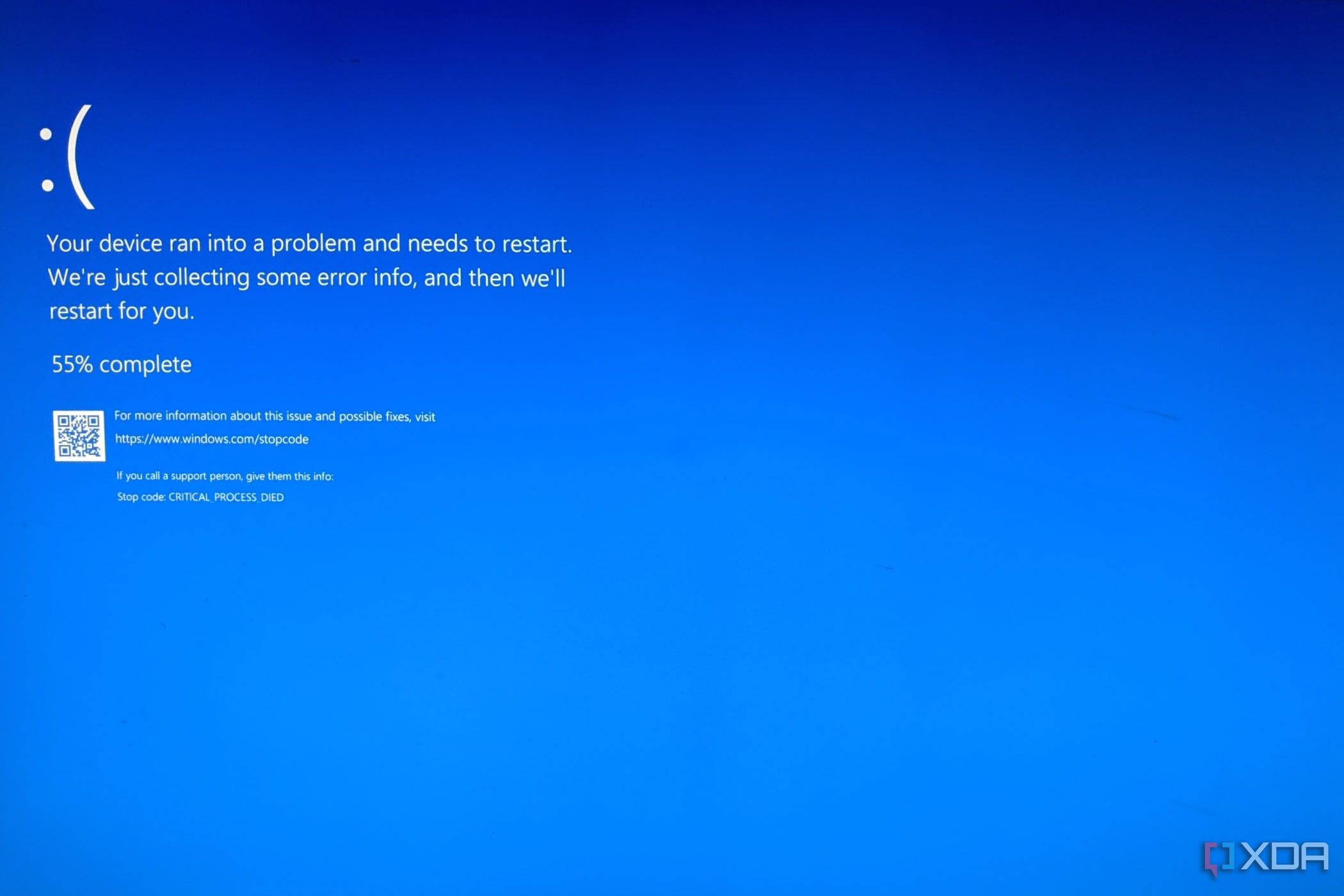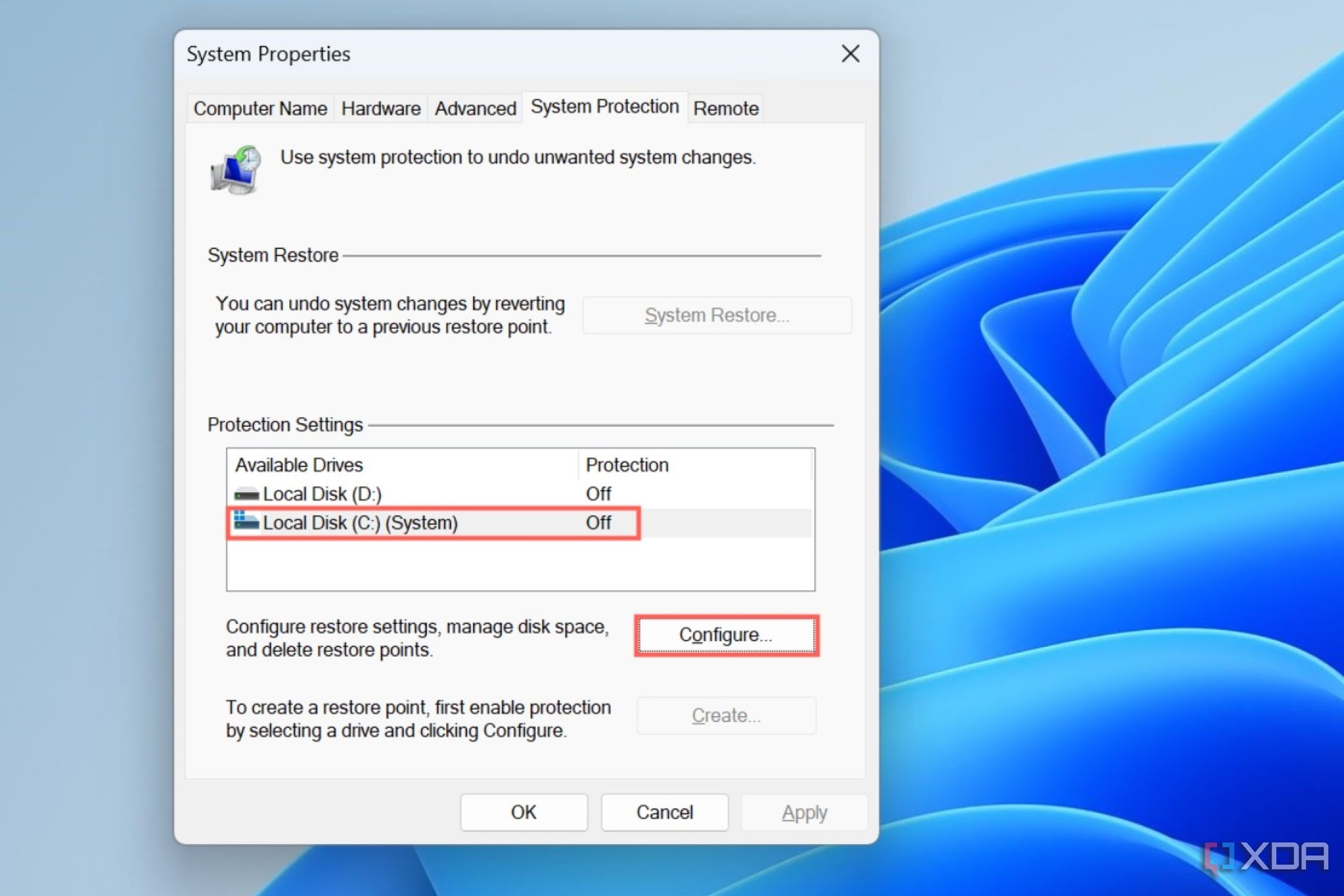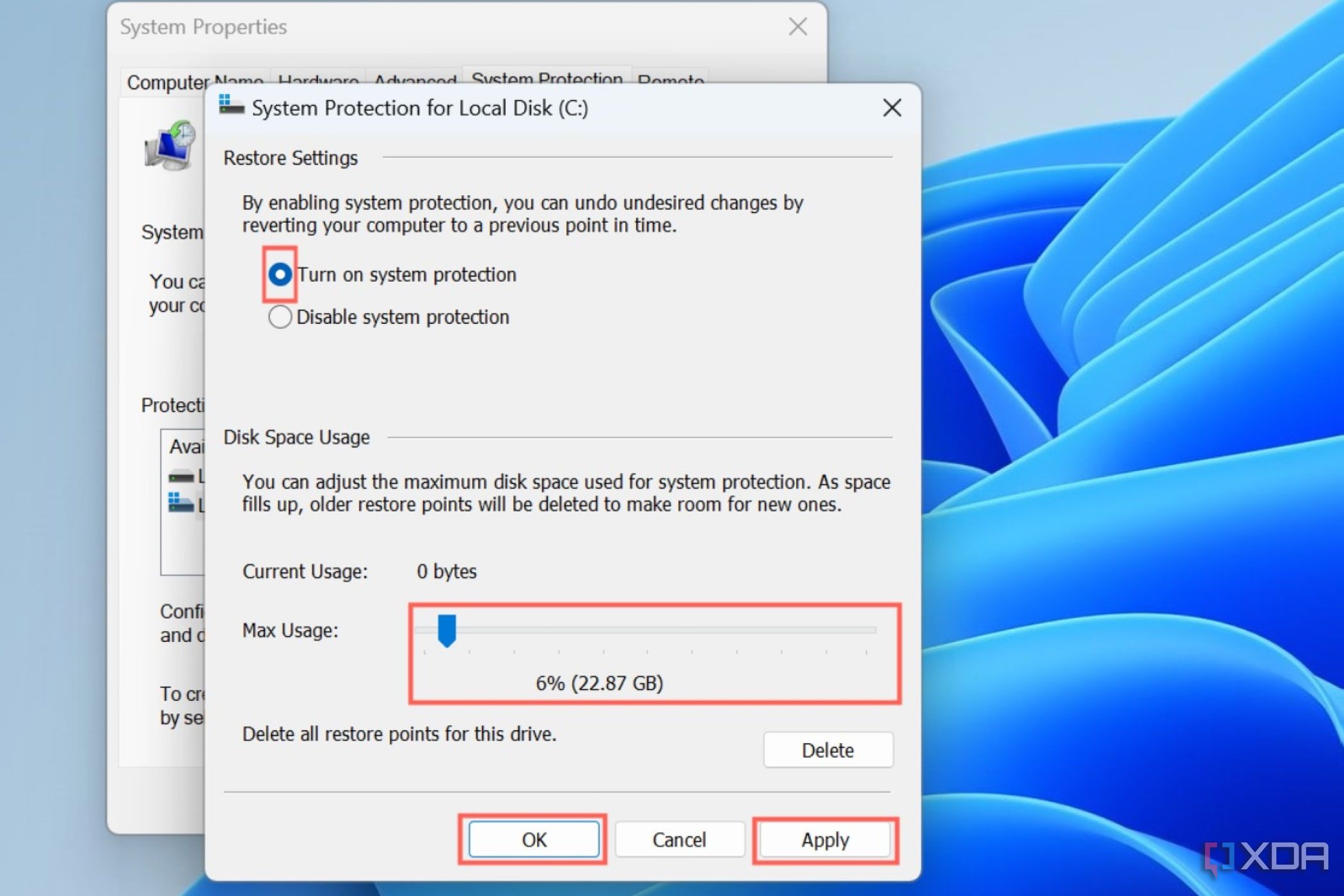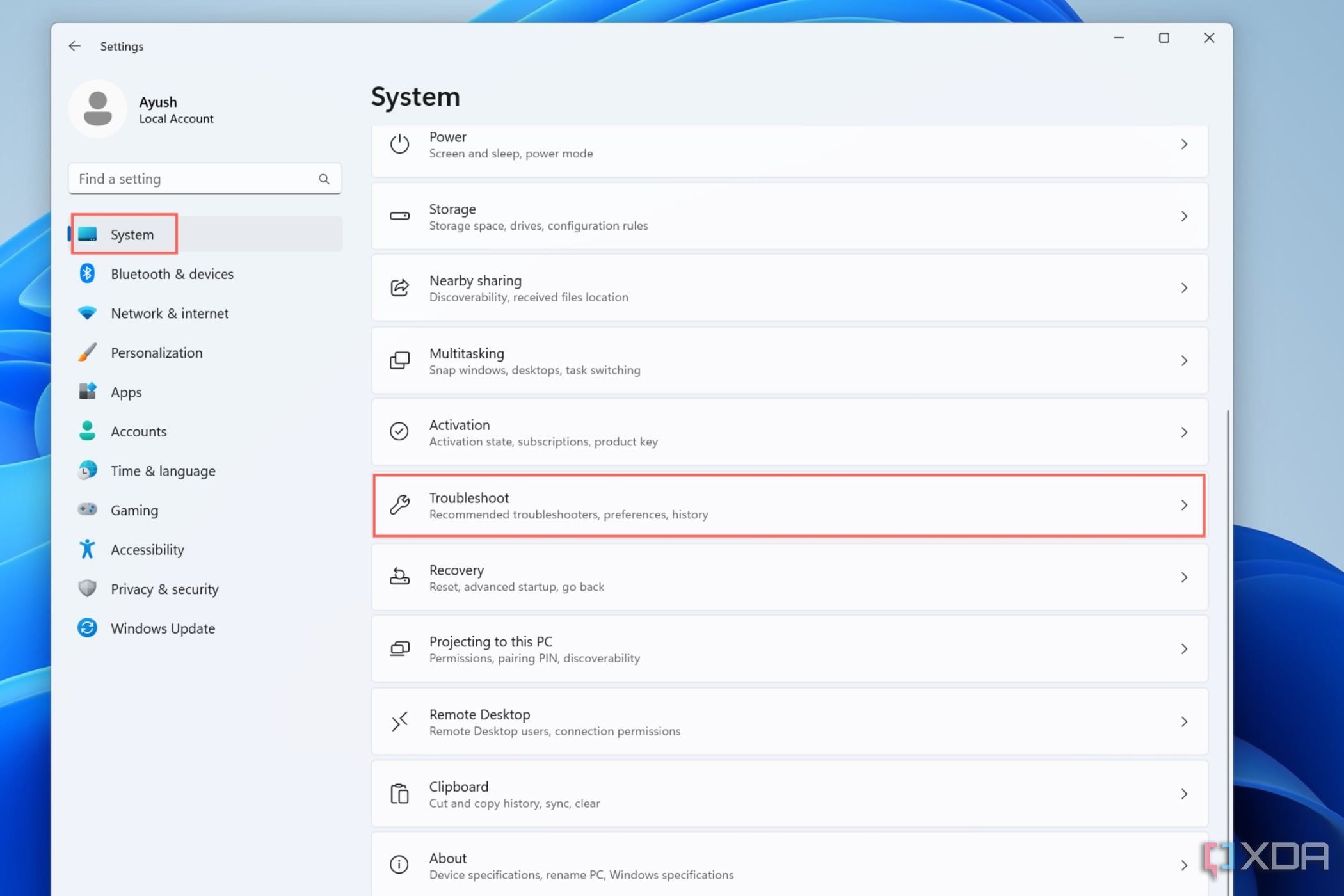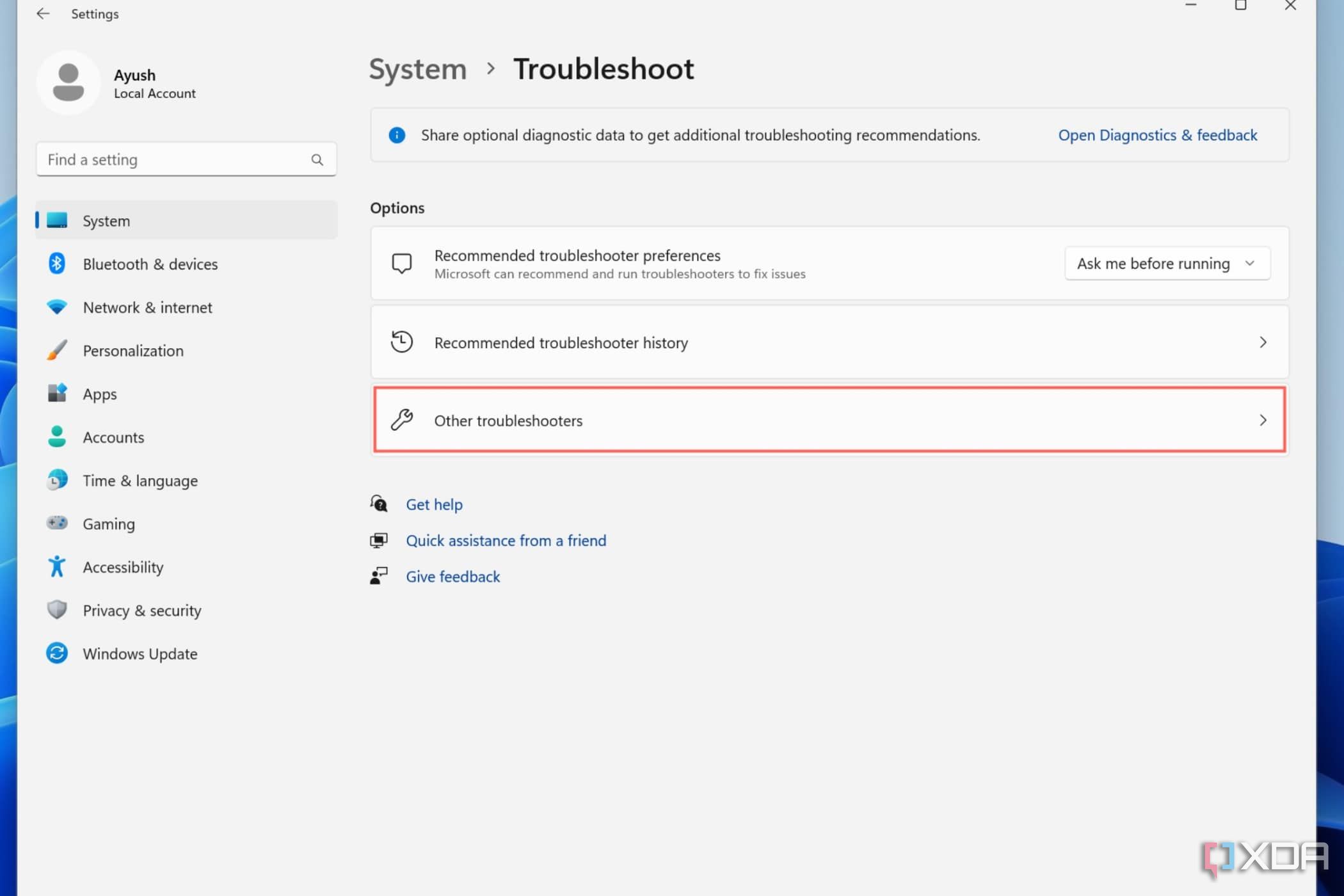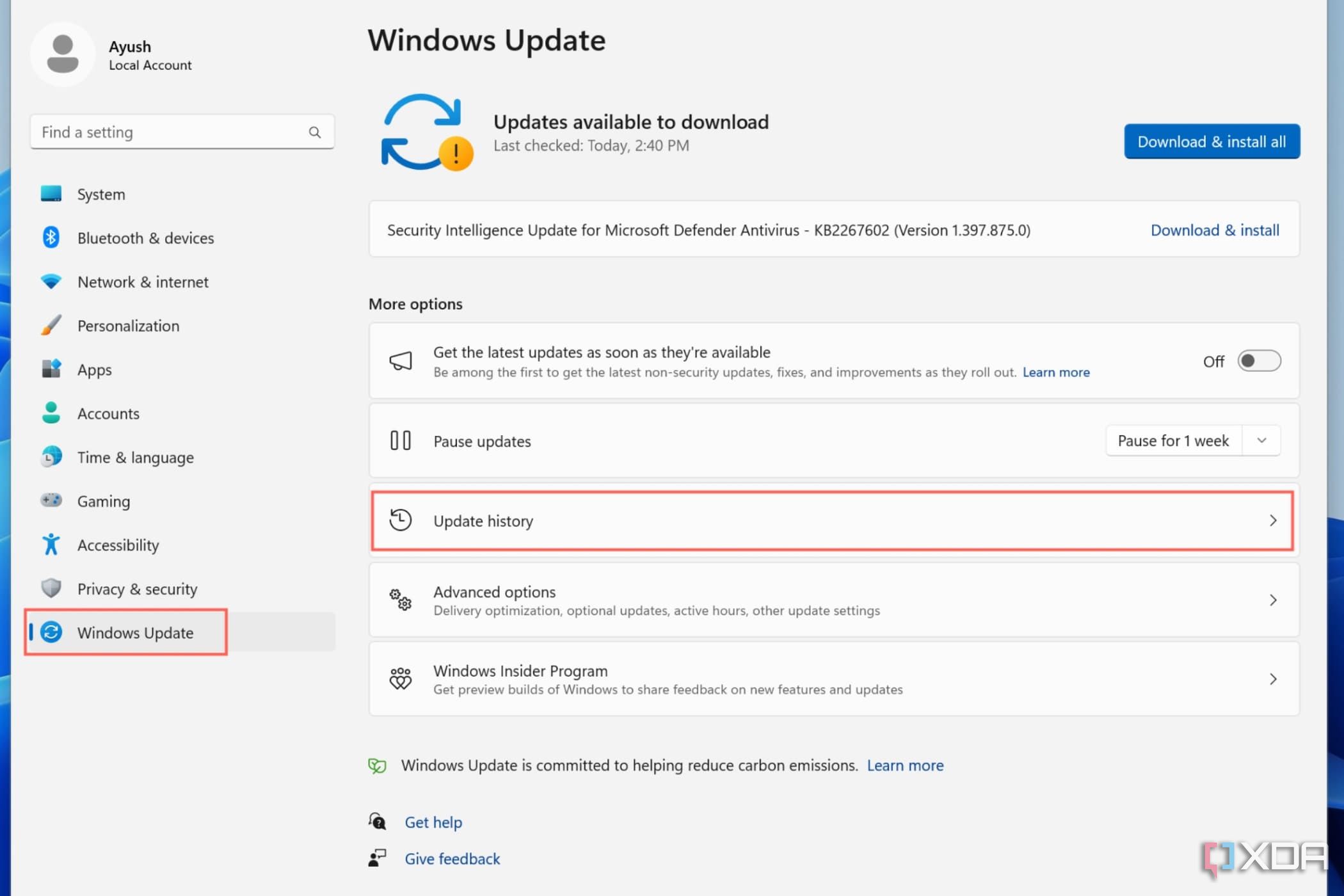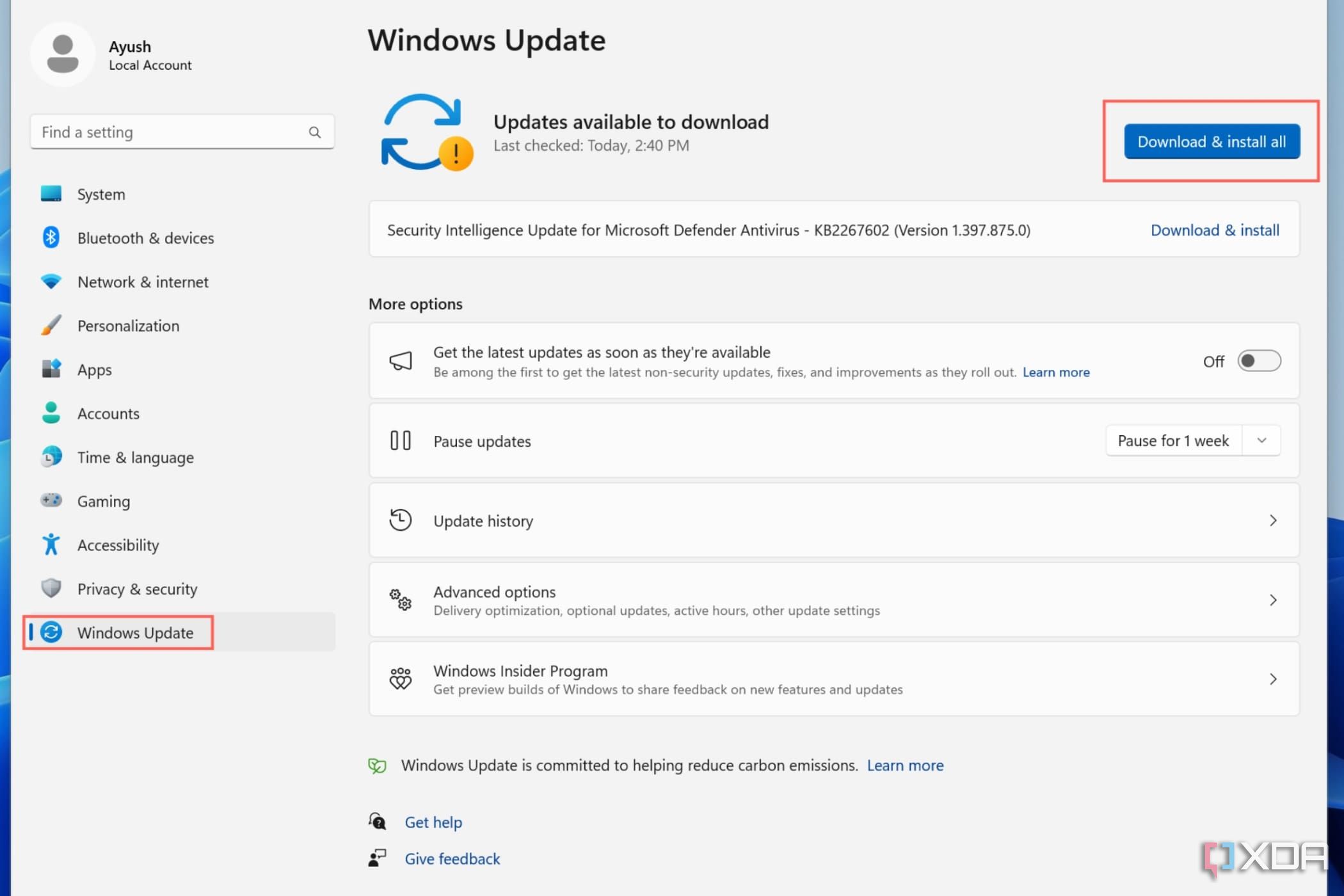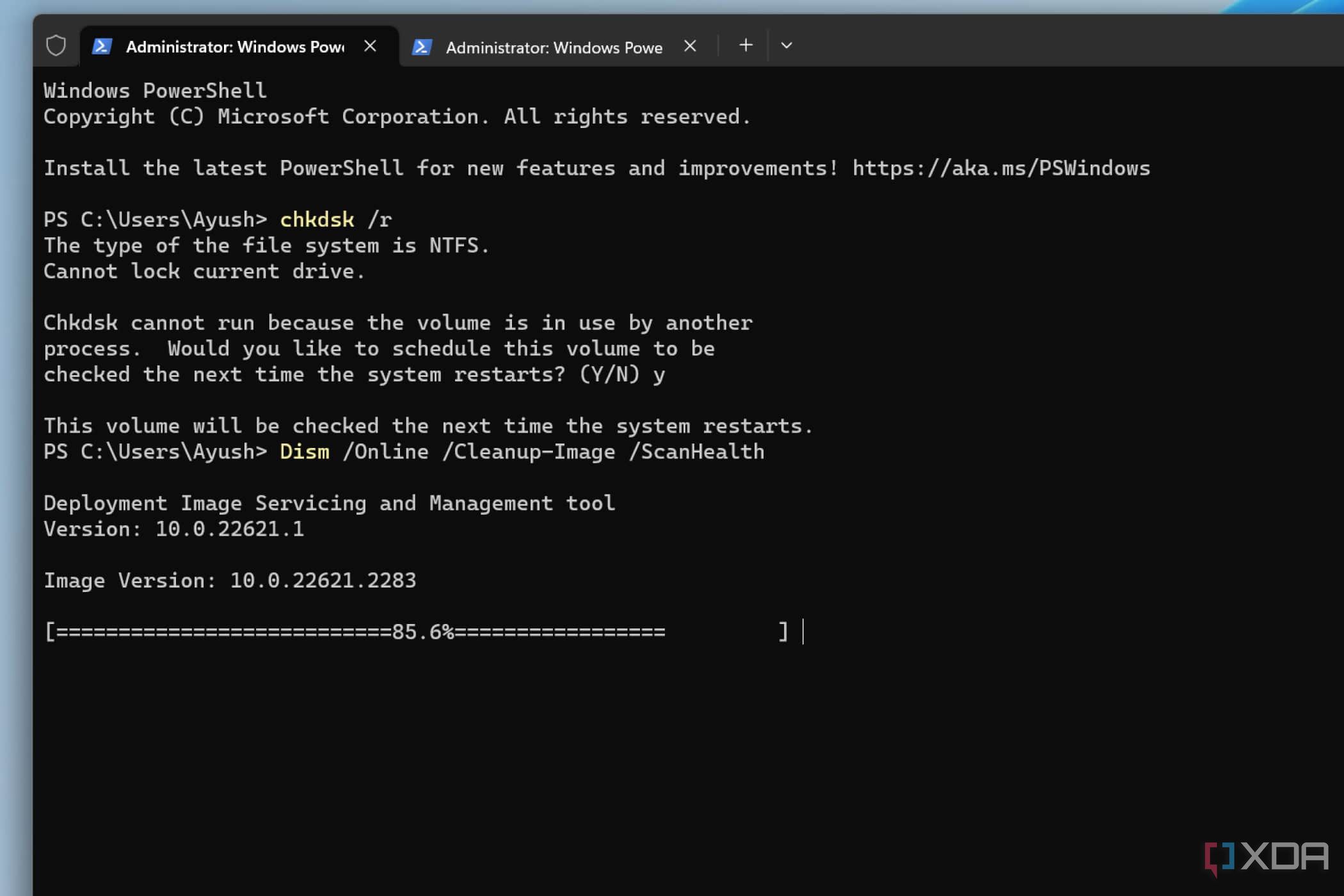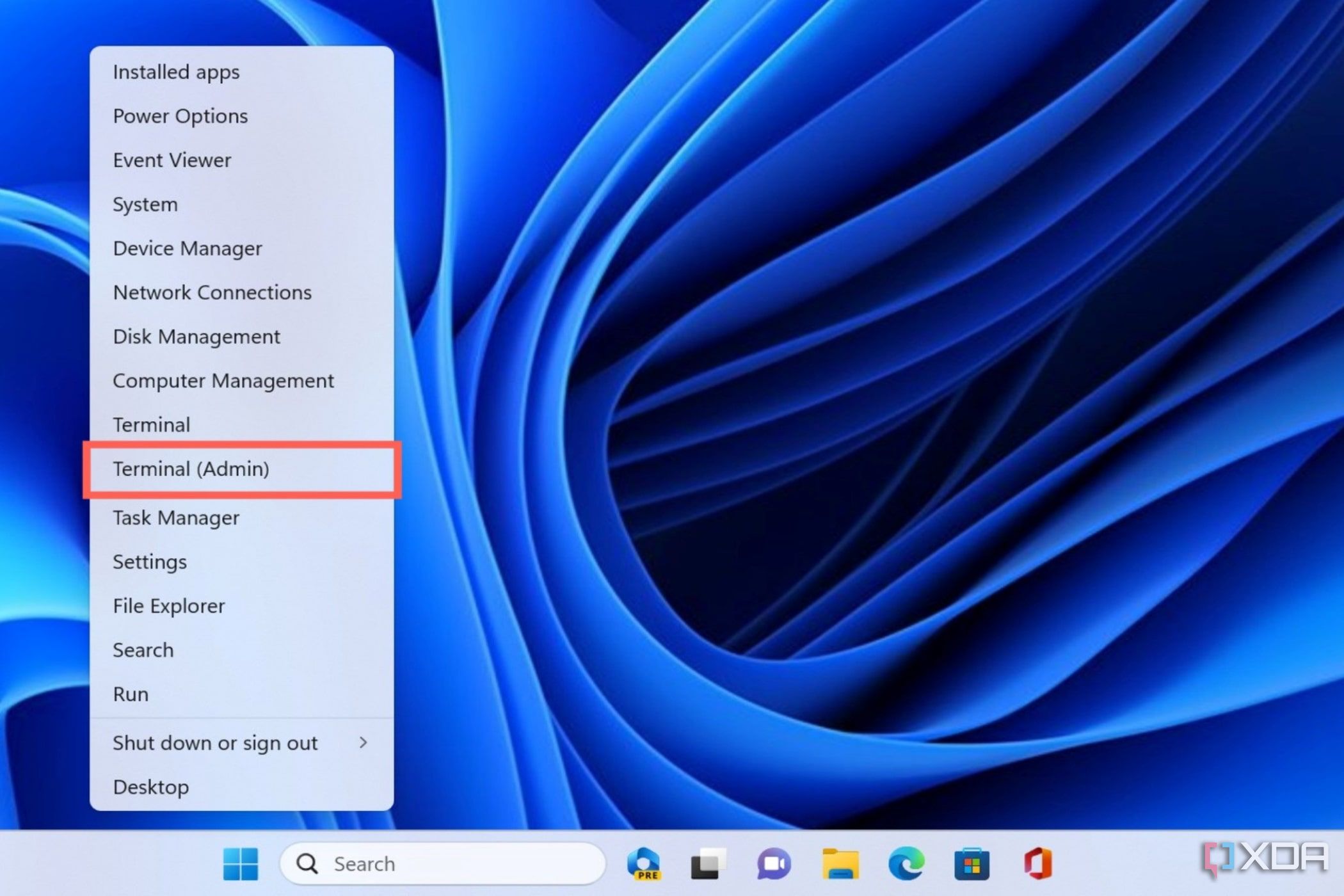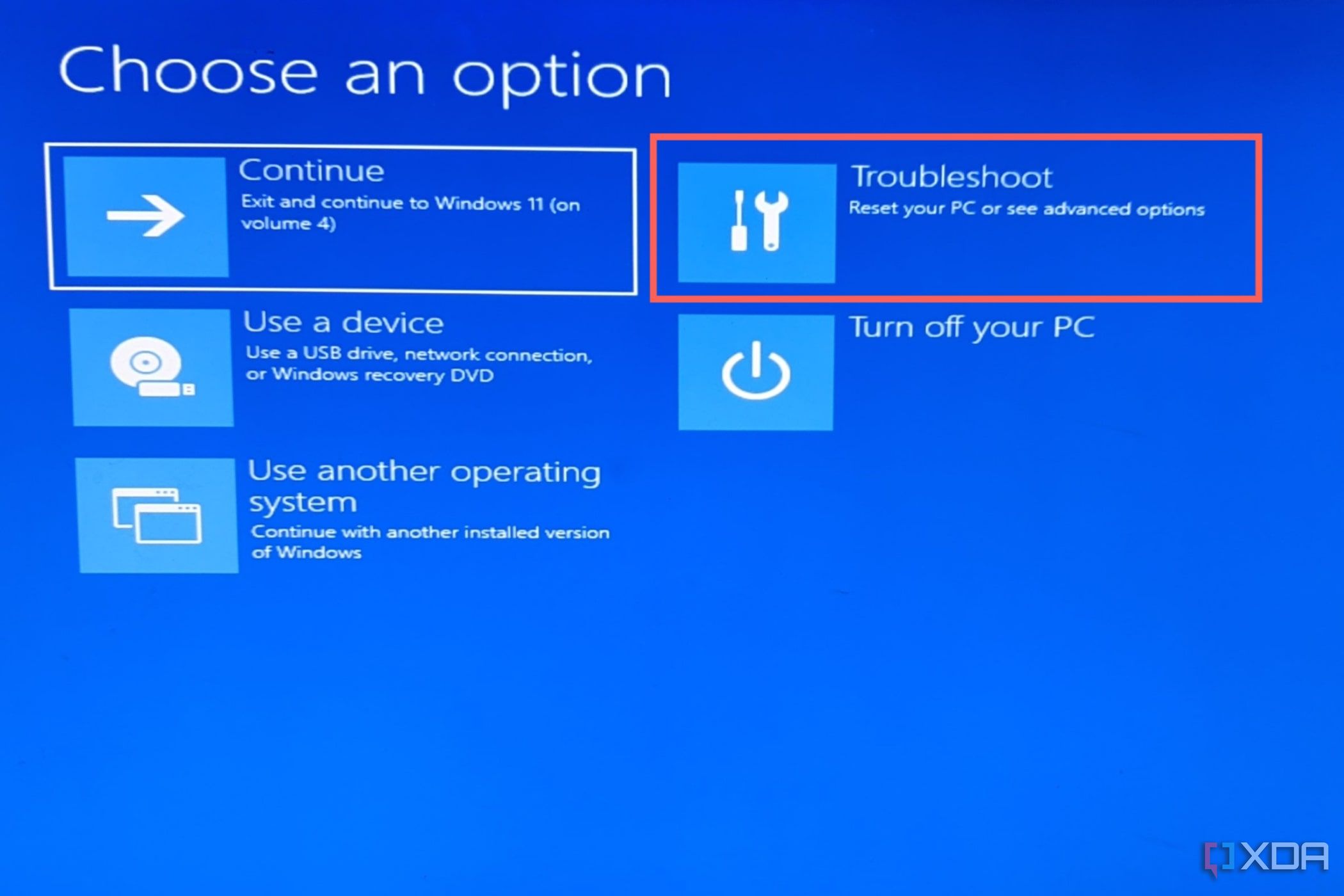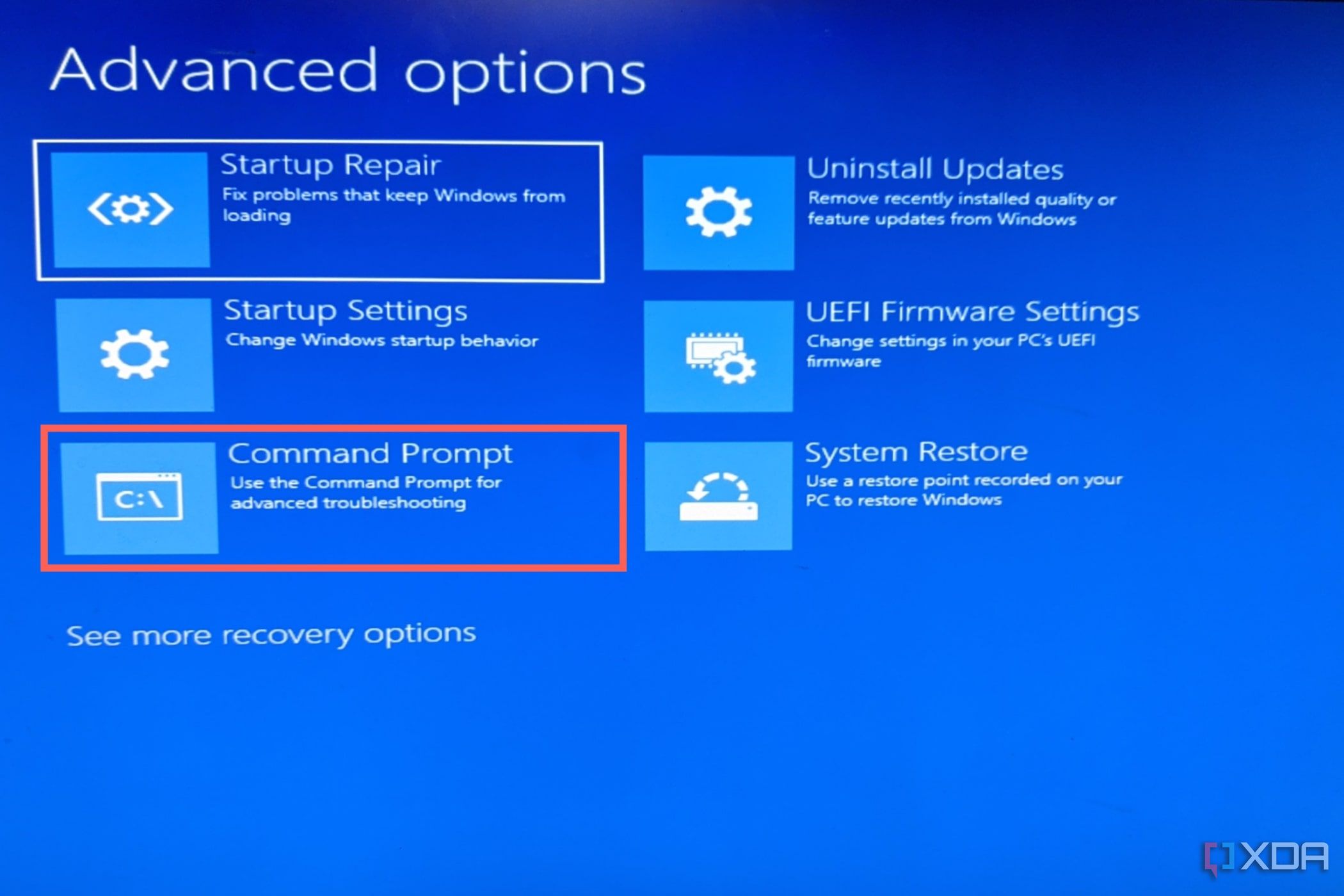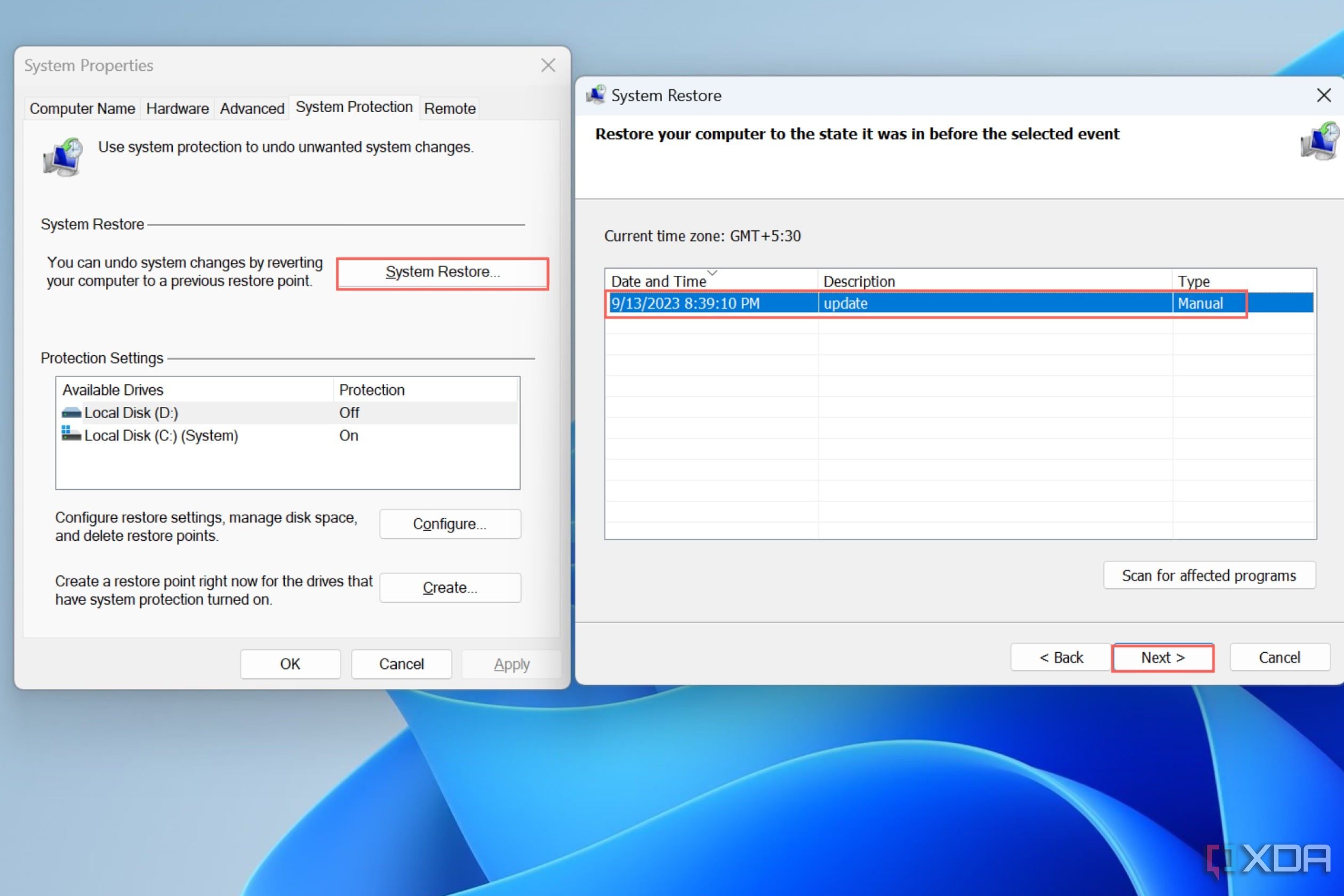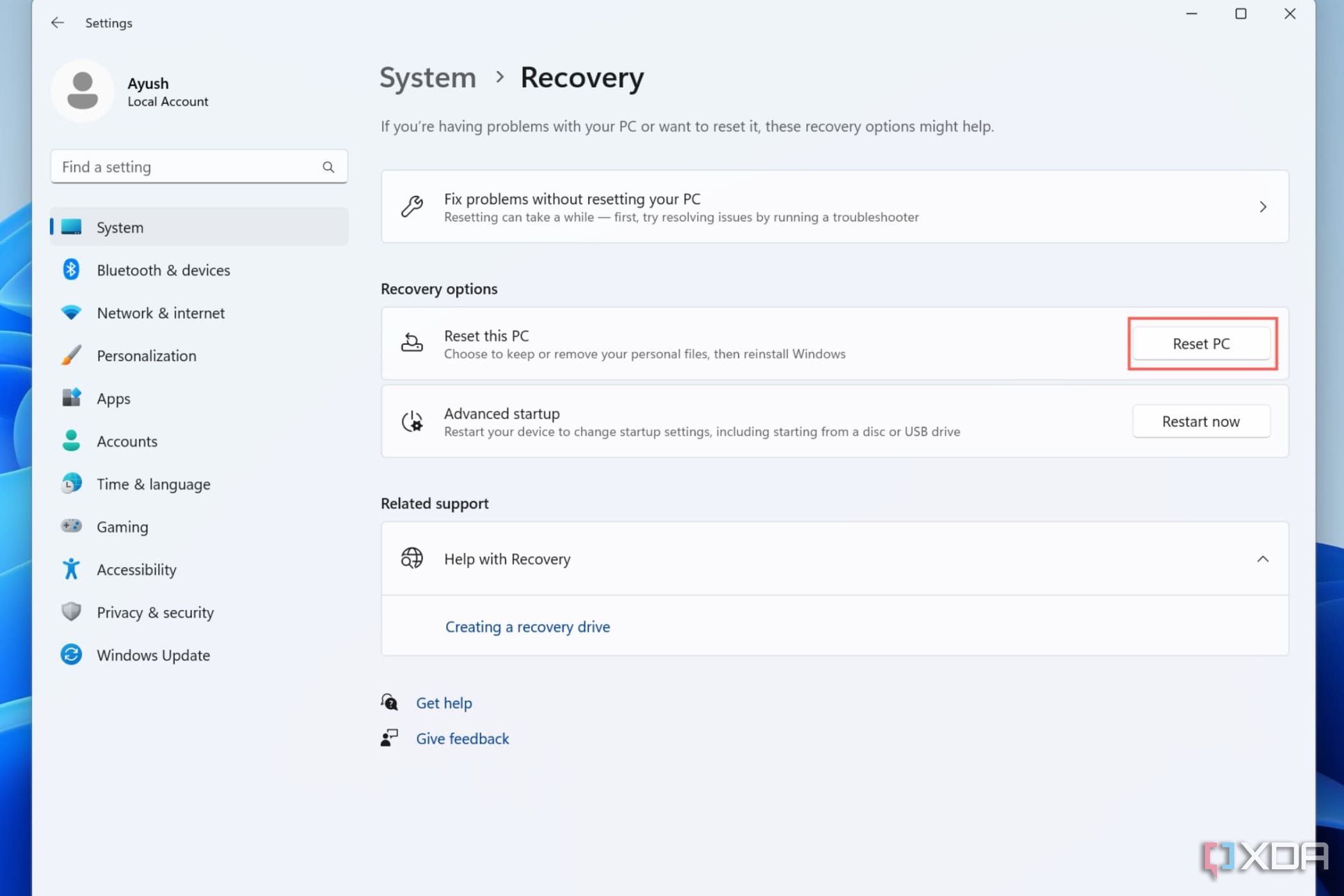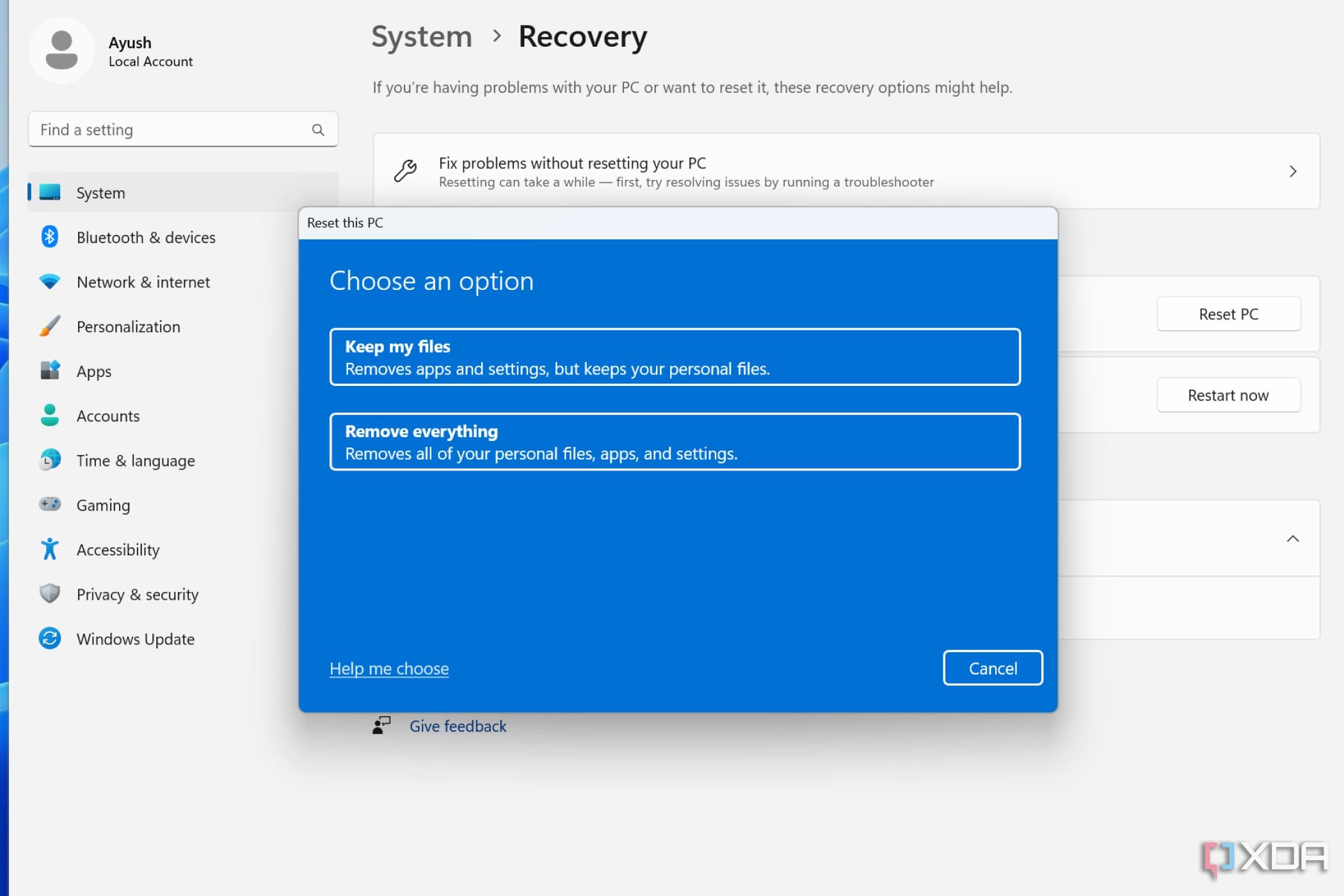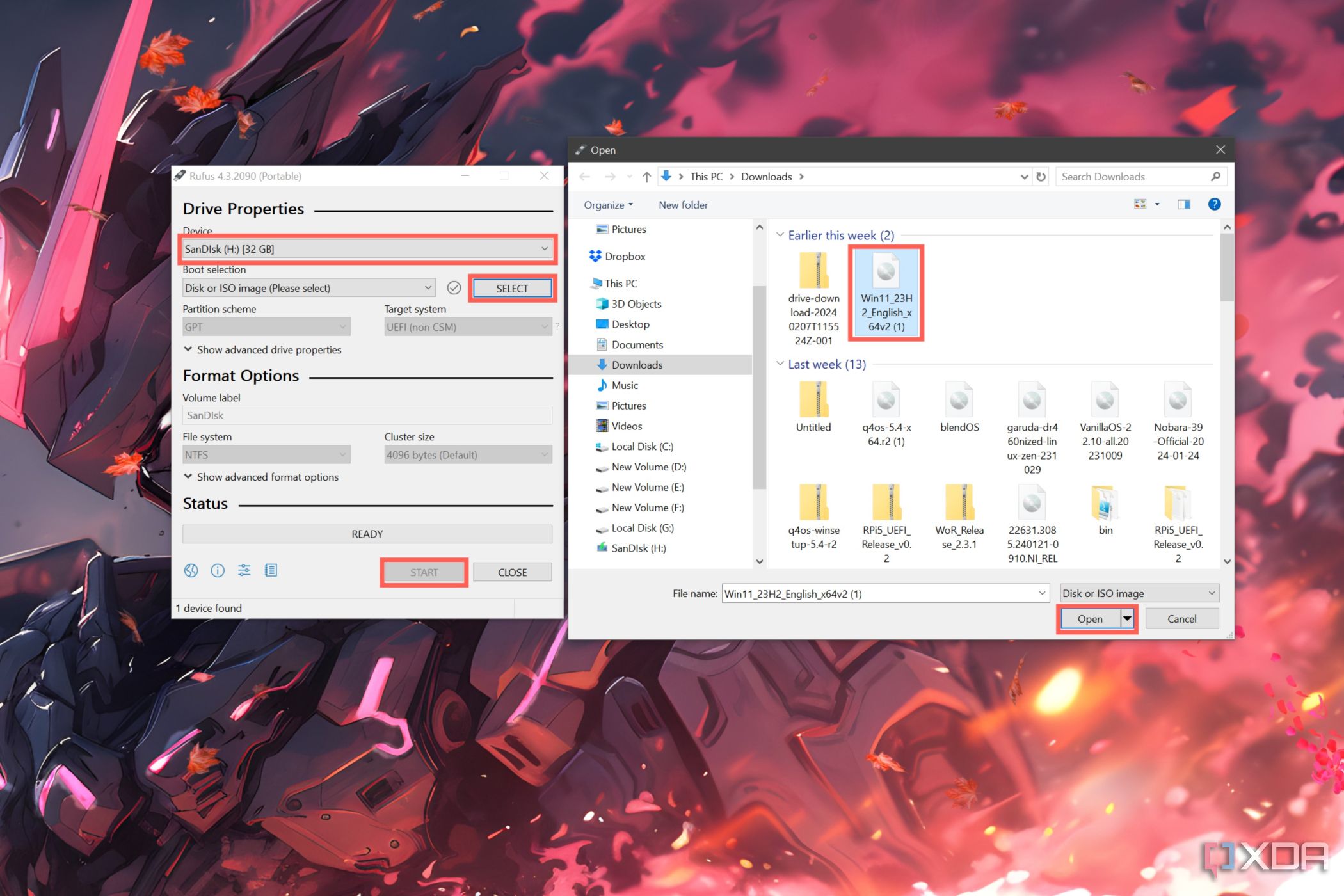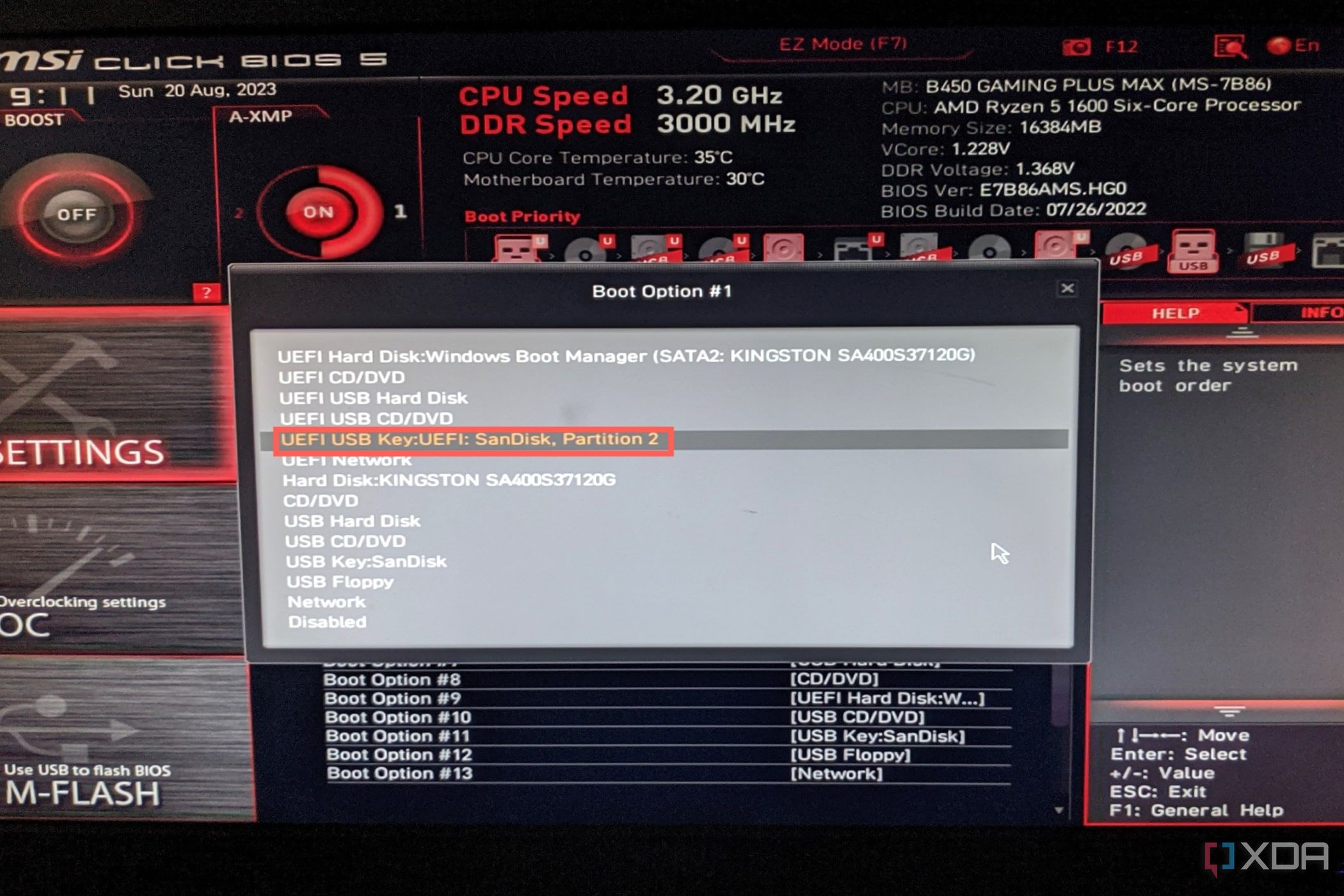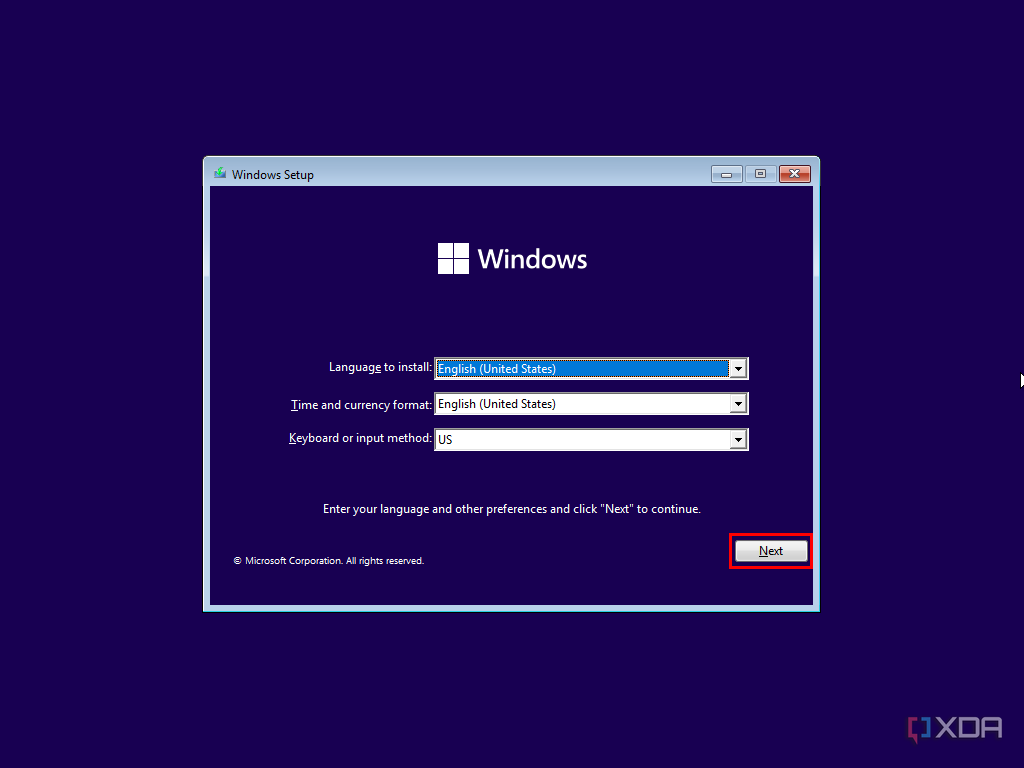Quick Links
Microsoft has deployed multiple updates and patches to weed out bugs from Windows 11 following its release. Unfortunately, the OS is still prone to errors and issues such as the corruption of Windows system files. This happens a lot more frequently than you may realize. As such, it's still possible to run into stability issues like slowdowns, freezes, and crashes even after taking proper care of your PC.
Although Microsoft offers tons of maintenance tools to help you diagnose and remove operating system errors, you might have some difficulty fixing your PC if you're new to troubleshooting. So, I've compiled a series of fixes in this article to help you resolve the issues plaguing your Windows 11 system.

How to fix the dreaded black screen of death on Windows
Facing a black screen after a boot is a dead-end on Windows. Here's how to get things back to normal.Before you begin
Attempting to repair the operating system is a risky procedure, so it’s a good option to back up your important documents and folders. The simplest way to do so is to upload them to a cloud platform like Dropbox, Google Drive, or Microsoft OneDrive. But I’d recommend creating a restore point that you can use to recover all your documents and PC settings if you accidentally damage your Windows files during the repair process. You can follow these steps to create a manual restore point in Windows 11:
1. Type "Restore Point" into the Windows Search Bar.
2. Click on the Create a restore point suggestion to open the System Properties pop-up window.
3. Pick the drive where you want to store the restore points and click on the Configure button.
4. Select the Turn on system protection option and choose the amount of disk space you want to allot for the recovery facilities.
- Note: a general rule of thumb is to allocate at least 15GB worth of space for the system restore points.
5. Hit Apply and press OK to head back to the System Properties window.
6. Click on Create to open the System Protection window.
7. Give a name to the restore point before pressing the Create button.
8. Windows will notify you when it finishes creating the save point. Click on Close and select OK.
How to repair Windows 11 using Windows troubleshooters
Running Windows troubleshooters is a preliminary fix to resolve minor issues in Windows. In some cases, the troubleshooter can root out and resolve the problems by itself without requiring you to mess around with Command Prompt or Control Panel settings.
1. Right-click on the Start menu and choose Settings.
2. Select the Troubleshoot submenu under the System tab.
3. Click on Other troubleshooters under Options and run all the troubleshooters one by one until the issue is resolved or until you reach the end of the page.
Of course, Windows troubleshooters can only get you so far, and that’s why we’ve got plenty of other tweaks to repair your Windows 11 files.
How to repair Windows 11 by uninstalling Windows updates
Microsoft is notorious for releasing buggy versions of updates for Windows 11. If you notice any stability issues after installing an update, rolling back to an older version of Windows can fix your system.
1. While you're on the Settings app, navigate to the Windows Update tab and click on Update history.
2. Choose the Uninstall updates option.
3. Press the Uninstall button next to the recently installed update and select Uninstall when prompted.
How to repair Windows 11 using Windows updates
Alternatively, you might want to update the operating system to the latest version, as Windows 11 updates include many patches and bug fixes, so one of them could resolve your system's issue.
4. Head to the Windows Update section of the Settings app.
5. Click on the Download & install all button next to the Updates available to download section.
How to repair Windows 11 using Windows Terminal commands
Windows Terminal is Microsoft’s latest terminal emulator that supports multiple command-line applications and shells. As a result, you can access many powerful utilities to help troubleshoot your PC, with CHKDSK, SFC, and DISM being three such commands.
You'd want to start with CHKDSK, which means "check disk." By scanning and repairing bad sectors in your boot drive, CHKDSK can fix data corruption errors plaguing your system.
1. Right-click on the Start button and choose Terminal (Admin).
2. Press Yes when prompted for administrator access.
3. Type the following command and press Enter.
chkdsk /r
4. Press Y and hit Enter if Windows Terminal asks you to schedule the error-checking process the next time your PC restarts.
If CHKDSK proves to be ineffective, you’d want to run Deployment Image Servicing and Management (DISM), a repair utility that allows you to diagnose and fix system images. Microsoft recommends you run this command before SFC when repairing the Windows Image.
1. Type the following command and hit the Enter key.
Dism /Online /Cleanup-Image /ScanHealth
The scanhealth command will check the Windows image for component store issues.
2. You can resolve the corruption errors detected by scanhealth by entering the following command into Windows Terminal and pressing Enter.
Dism /Online /Cleanup-Image /RestoreHealth
3. Restart your system.
Next, you should run System File Checker or SFC to detect corrupted system files and replace them with fresh versions.
1. Type the following command in Windows Terminal and hit Enter.
sfc /scannow
2. Reboot your system once Windows Terminal finishes executing the SFC command.
How to repair Windows 11 using Windows Recovery Environment
If the Windows Terminal commands fail, you can use two methods built into the Windows Recovery Environment to repair the OS. The Startup Repair facility can analyze the system logs to troubleshoot boot issues, and can even fix them without further input from the user.
1. Open the Settings app and click on Recovery under the System tab.
2. Hit the Restart now button next to the Advanced startup option under Recovery options.
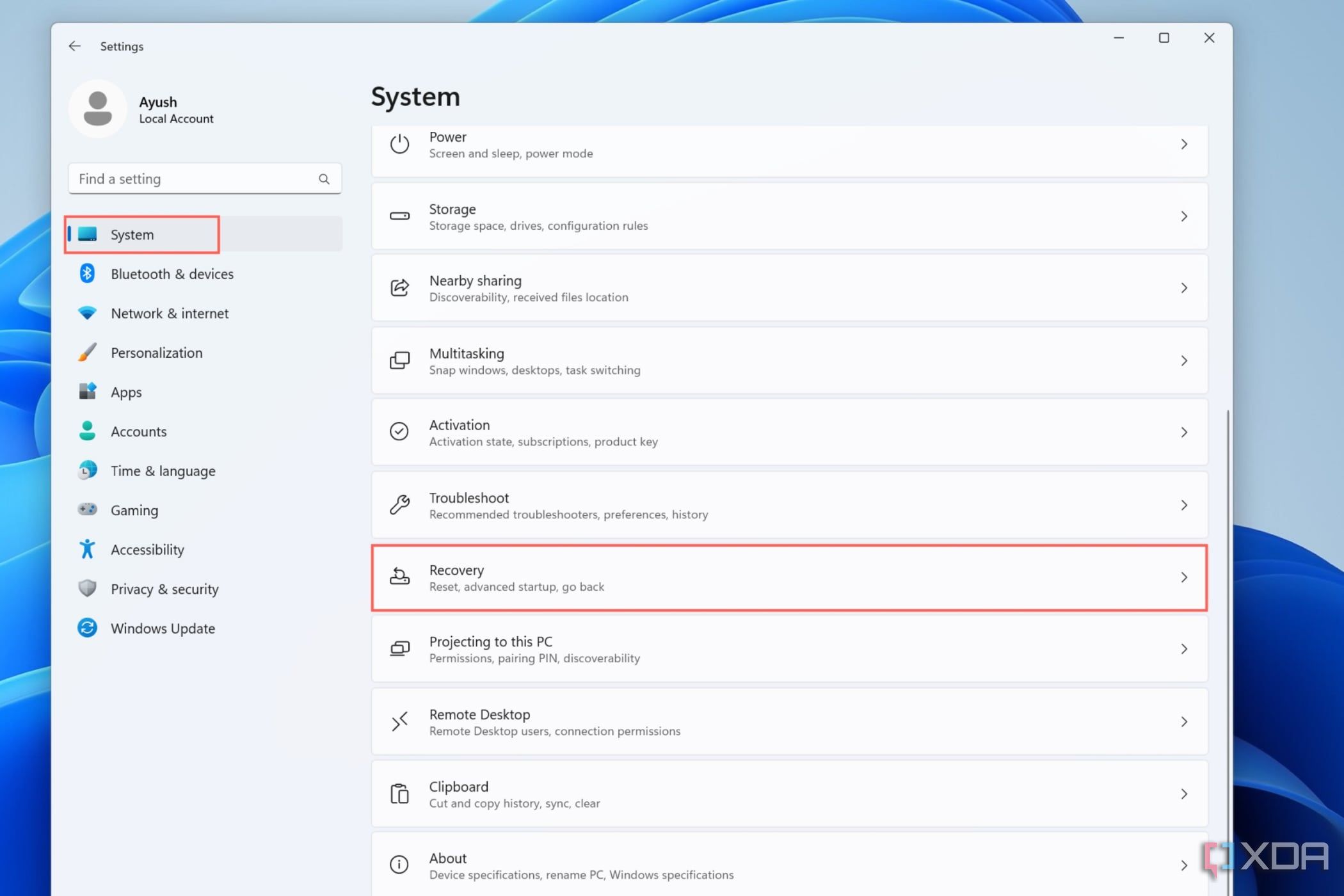
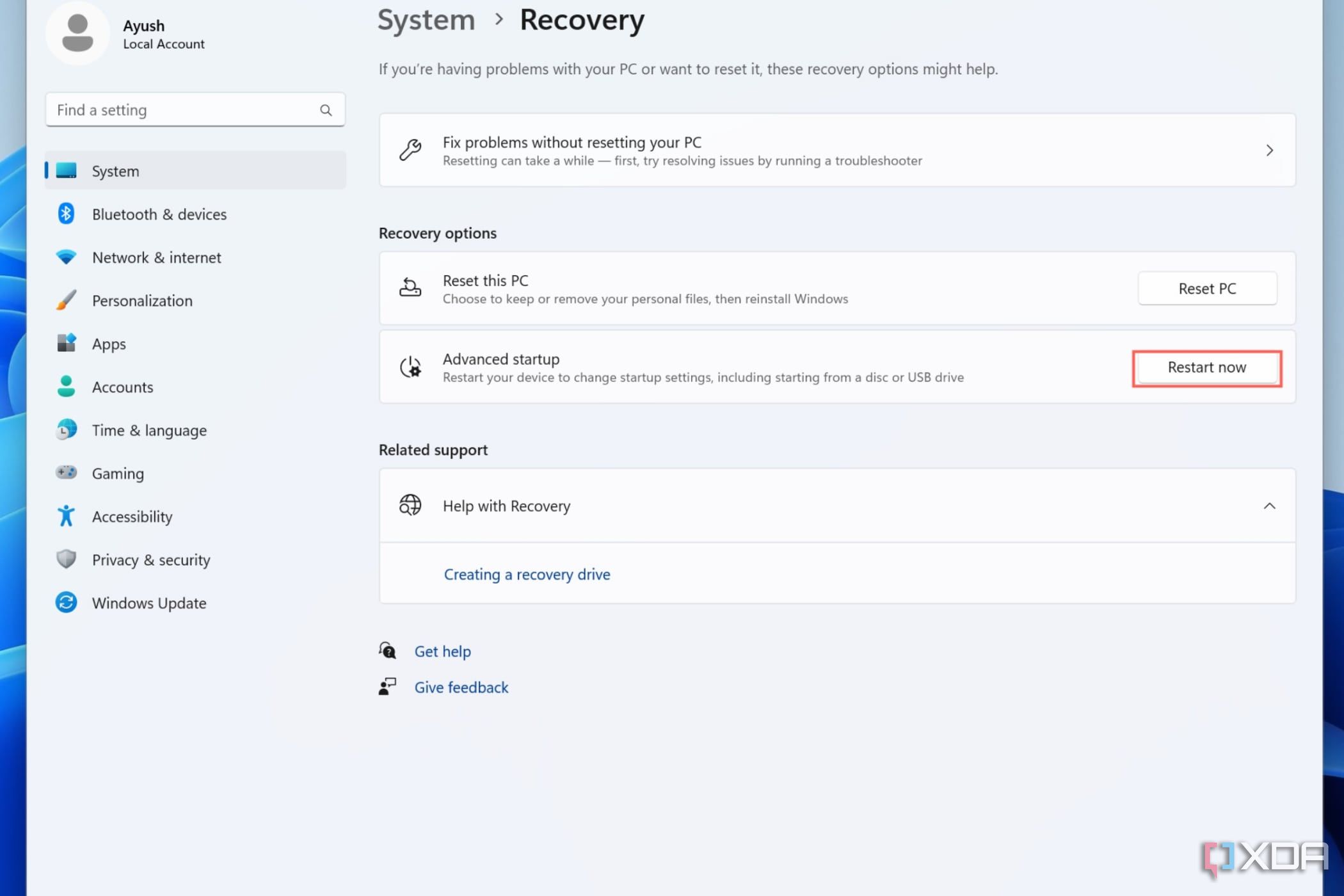
3. Choose Restart now once again when prompted.
4. Click on Troubleshoot after your PC reboots into the Windows Recovery Environment.
5. Select Advanced options.
6. Choose Startup Repair.
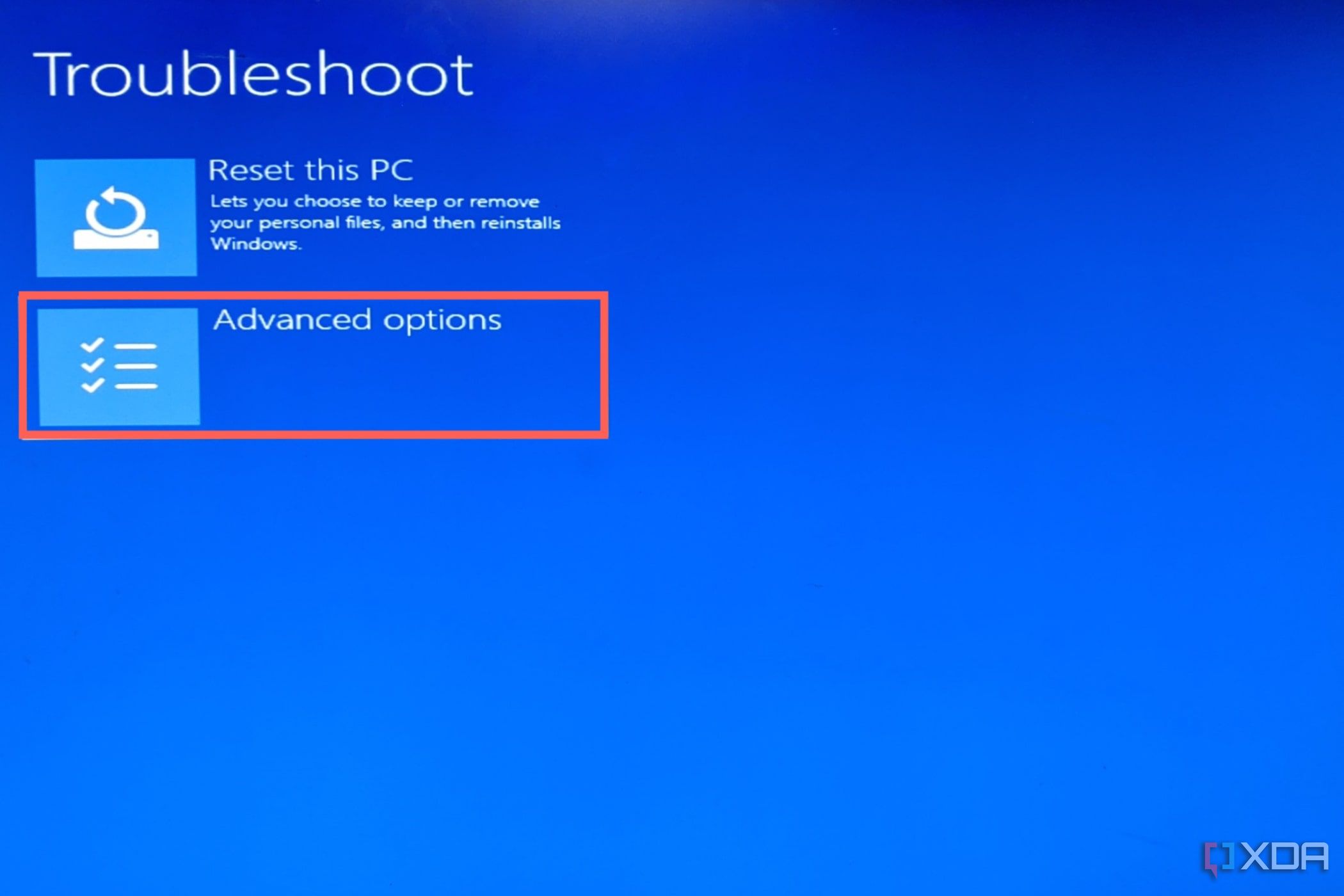
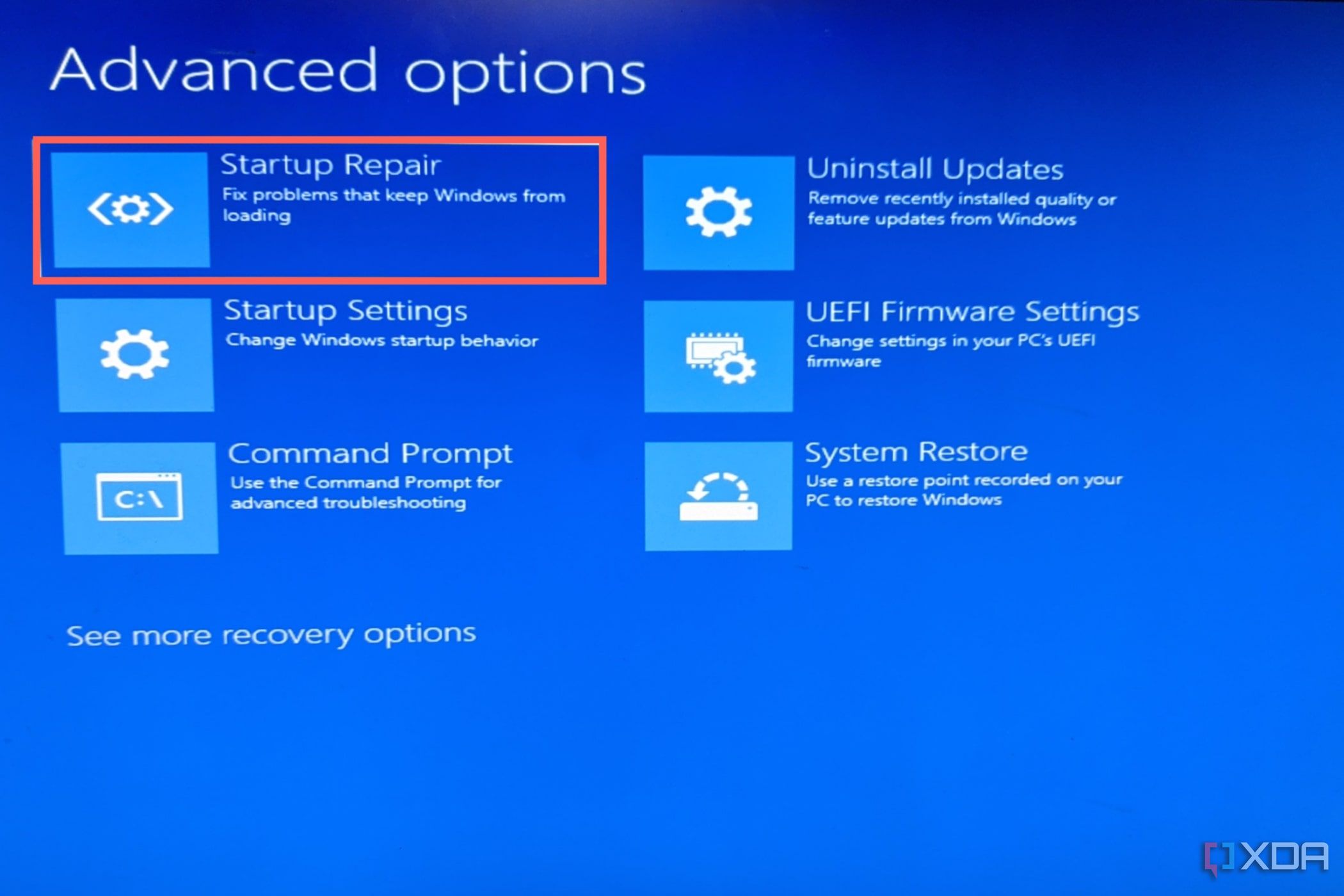
You can also run the Bootrec.exe command in the Windows Recovery Environment to resolve issues affecting the Master Boot Record (MBR), boot sector, and Boot Configuration Data (BCD) store. As with the Startup Repair method, you’ll need to enter the Windows Recovery Environment to use this command.
1. Once you’re in the Windows Recovery Environment, click on the Troubleshoot button and select Advanced options like you did earlier.
2. Choose Command Prompt.
3. Run the following commands one by one.
Bootrec.exe /FixMbr, Bootrec.exe /FixBoot, and Bootrec.exe /RebuildBcd
4. Restart your PC after executing the three commands.
How to repair Windows 11 using System Restore
As mentioned earlier, the System Restore facility built into Windows allows you to roll back any changes made after the creation of the restore point. Fair warning, while you can use it to fix system file corruption, you may lose important data, so you should proceed with caution. Also, you can only use this method if you have a restore point created well before you first encountered the errors on Windows 11.
1. Type "Restore Point" into the Search bar and pick the Create a restore point option.
2. Choose System Restore on the System Properties pop-up window.
3. Pick the Restore Point you'd like to revert your system to, press Next, and hit the Finish button.
How to repair Windows 11 by resetting your PC
If System Restore was unable to repair Windows 11, you’d have to resort to reinstalling the operating system. Fortunately, the Reset setting allows you to keep your personal files, although you’ll have to download all of your apps again after the reset wizard finishes installing Windows 11.
1. On the Settings app, click on the Recovery option under the System tab.
2. Select Reset PC under Recovery options.
3. Click on Keep my files (recommended) or Remove everything (caution, this would delete your information) to initiate the system reset.
How to repair Windows 11 by reinstalling the OS
If your Windows 11 files are damaged beyond repair, it's possible for your PC to get stuck in a boot loop. In this scenario, your best bet is to reinstall Windows 11 from scratch. Although we recommend backing up your data first of course, you should be able to retain personal files this way, though the apps will need to be reinstalled.
You'll need another PC to create a bootable USB, which you can plug into the damaged system and perform a clean installation of the OS.
1. Download the latest Windows 11 ISO file from Microsoft's official servers.
2. Download the portable version of Rufus from this link and run the executable file with admin privileges.
3. Pick the USB drive, choose the Windows 11 ISO you downloaded earlier, and choose Start.
4. Once Rufus is done flashing the OS files, plug the USB drive into the defective PC and enter the BIOS.
5. Grant the highest boot priority to the USB drive.
6. Once your PC reboots, pick the Language, TIme, and Keyboard options, and hit Next to begin reinstalling Windows 11.
Final thoughts
We hope you are able to fully repair your Windows 10/11 system. Almost all the fixes will work on Windows 10 PCs, so you can follow along even if you haven't upgraded to Microsoft's latest OS yet.
If you continue to encounter crashes or BSOD after implementing all the fixes, there may be something wrong with the hardware of your computer (instead of a software issue). In that case, the software tweaks mentioned above wouldn't be intended to resolve what is going on. If so, you should consider replacing the CMOS battery as a depleted battery can also cause issues during startup.
Next, you should test your power supply using a multimeter to ensure it's in working order. If the PSU isn't the culprit, then you should start troubleshooting the other components of your PC, starting with the hard drive or SSD that you use as the boot drive, since the drive itself may be malfunctioning.

